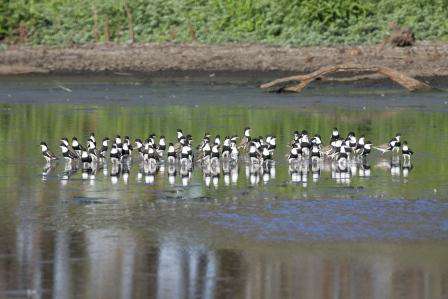Even though autumn is well and truly here, across the Goulburn Broken Catchment most wetlands and swampy areas are still in a natural drying phase.
Even though autumn is well and truly here, across the Goulburn Broken Catchment most wetlands and swampy areas are still in a natural drying phase.
Goulburn Broken Catchment Management Authority (CMA) Land & Biodiversity Manager Steve Wilson said the drying cycle created new habitat and opportunities for many waterbirds.
“Waders in particular, will turn up and gorge on short-term abundant insects and aquatic bugs trapped in shallow pools,” Mr Wilson said.
“You may see royal and yellow-billed spoonbills moving into dry wetlands to sift out aquatic bugs from the pools and we’ve had migratory waders arrive from the northern hemisphere - as well as our local native species - coming together in large numbers to feed.”
Mr Wilson said a good example of waterbirds using the drying cycle could be seen in the Lower Goulburn National Park, Shepparton, locally known as Reedy swamp.
“This wetland regularly provides good refuge and breeding habitat for birds when wet, but is equally important when drying,” Mr Wilson said.
“At the moment significant numbers of Red-kneed dotterels Erythrogonys cinctus are working the wetland. Typically seen in pairs or small parties, these attractive waders are clown-like in appearance with bright red knees, a red bill with a black tip and conspicuous black and white markings on the head and chest.
“These birds work the shallow and drying margins of the wetlands, skipping over the mud picking off insects and are happy feeding in and amongst others species as well.”
He said red-kneed dotterels normally bred between October and January.
“They lay up to four eggs directly on the ground in a scrape just above the waterline,” Mr Wilson said.
“The chicks are precocial - or ready to run - soon after hatching. So if you have a pair of binoculars, go and visit your local wetland, you never know what you might see.”
For more information about the Catchment’s wetlands visit www.gbcma.vic.gov.au
